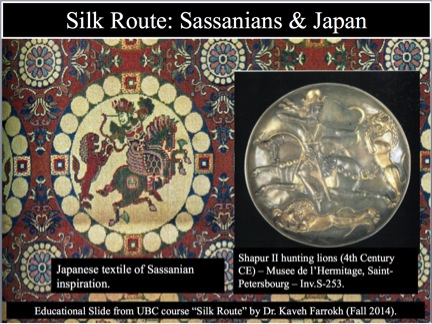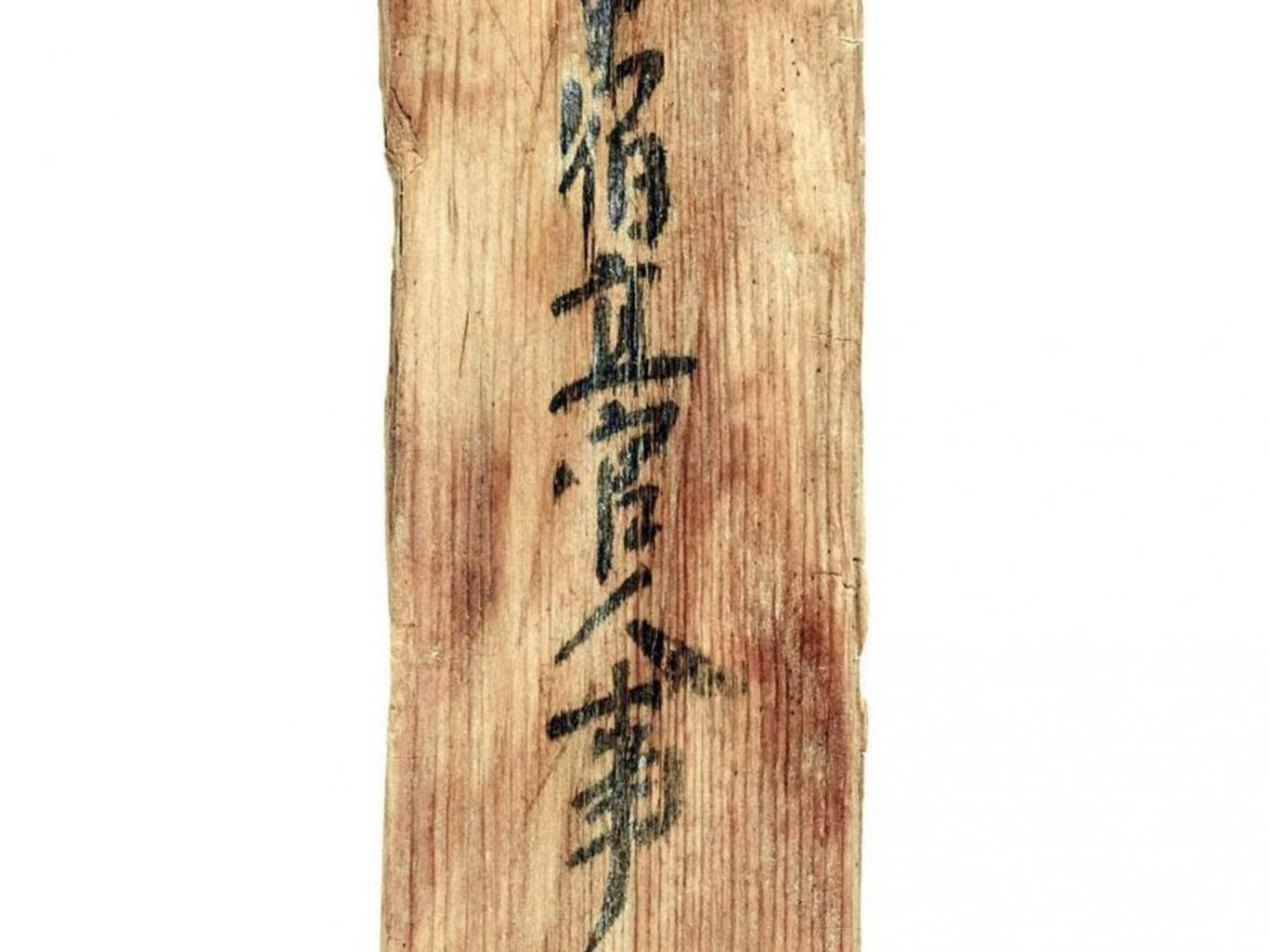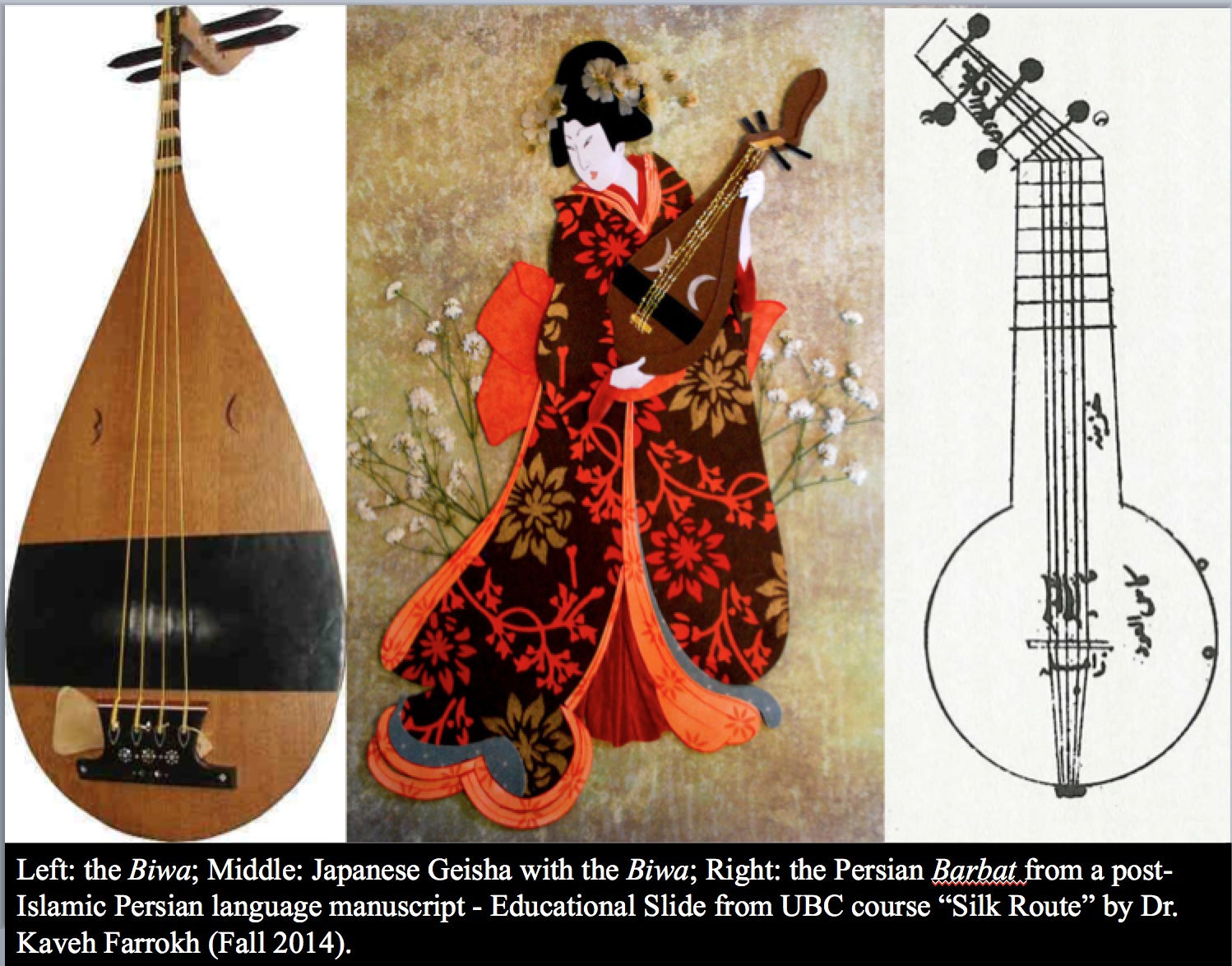The article “Iranians in Japan: Early Times” written by Toyoko Morita was originally posted in the Encyclopedia Iranica on December 15, 2008 (Vol. XIV, Fasc. 5, pp. 558-560 and Vol. XIV, Fasc. 6, p. 561) and updated on April 10, 2012. Kindly note that the version printed below contains images and accompanying captions that do not appear in the original Encyclopedia Iranica posting.
=========================================================================================
The first mention of Iranians (Persians) coming to Japan can be found in the Nihon Shoki (Chronicles of Japan), one of the earliest Japanese historical sources, completed in 720 C.E. It records that in 654 C.E. several people arrived in Japan from Tokhārā (Aston, pp. 246, 251, 259). Though there is some controversy about the location of Tokhārā, some scholars have claimed the name to be a shortened version of Toḵārestān, which was part of the territory of Sasanian Persia (Itō, 1980, pp. 5-10). Elsewhere in the Nihon Shoki, it is mentioned that in 660, when an Iranian (Persian), whose name was Dārā, returned to his country, he left his wife in Japan and promised the Emperor that he would come back and work for him again (Aston, p. 266; Imoto, 2002, pp. 58-60).

Sassanian influences upon Japanese arts: the case of the metalwork plate of Shapur II hunting lions (Hermitage Museum, St. Petersburg – Inv. S-253) and motif-parallels in Japanese textile arts (Source: Fall 2014 course on the Silk Route at the University of British Columbia).
In the 7th to the 9th centuries, foreigners—then known in Japanese as toraijin—were coming to Japan mainly from Korea and China, bringing with them technology, culture, religion (Buddhism), and ideas. Eastern Asia, especially the Tang Dynasty of China (618-907), had socio-economic networks with many regions of the world, including southern and western Asia. Chang’an (present-day Xi’an), the capital of the Tang Dynasty, was an international city with people from various countries, including Iranians (Persians), some of whom traveled further to Japan. Iranian names are to be met with in historical documents, and one can find some influence of Persian culture in the architecture, sculptures, and also in the customs and old Japanese rituals at that time. For example, some scholars have claimed that there is some influence of Persian culture in the Omizutori ritual held every February at Tōdaiji temple in Nara (Itō, 1980, pp. 125-33).

Scientists have used infrared imaging technology to analyze carvings on a piece of wood from c. 7th century Japan. The writings on the wood appears to name a Persian mathematics lecturer who worked at a facility in a millennium ago Japan where government ministers were trained in the former Japanese capital of Nara … for more on this click here …
The oldest document in Persian, which is preserved in Japan, was procured by the Japanese priest named Kyōsei (1189-1268) from Iranians (Persians) during his trip to southern Asia in 1217. Thinking they were Indians, the priest asked them to write something for him as a keepsake. However, after his return to Japan he found out that they were not Indians, because no one could understand what the writing meant. This document—a single page—was discovered in the late 20th century, when it was established that it is written in Persian and contains a line from Abu’l-Qāsem Ferdowsi’s Šāh-nāma (qq.v.), a line from Faḵr-al-Din Gorgāni’s Vis o Rāmin (qq.v.), and a quatrain of unknown authorship (Okada, 1989).

An enduring Sassanian legacy in Japan: the Biwa and its ancient Iranian ancestor, the Barbat (Source: Lecture slide from Kaveh Farrokh’s lectures from the course “The Silk Route: origins & History“).



